
LOCAL INFO
A COUNTRY TO DISCOVER STEP BY STEP
Intriguing and fascinating Romania awaits you to get in touch with its appeal.

Romania is the largest country in southeastern Europe and a member of the European Union since January 2007. The country is best known worldwide for its beautiful natural landscapes and UNESCO Heritage sites, such as The Danube Delta, the Monasteries of Moldova and the Transylvanian medieval cities. Also known as the mysterious land of the Legend of Dracula, Romania is a whole of fascinating experiences where Authentic, Natural and Cultural are the words that best capture its essence and make up an intriguing country rich in history, arts and scenic beauty.
The essential: Facts about Romania
• Romania is a member state of the EU (2007); NATO (2002) and OIF (1993)
• Border countries: Ukraine, Hungary, The Republic of Moldova, Serbia, Bulgaria
• Time zone: GMT + 2:00
• Currency: Romanian Leu (RON)
• Population: 19,350,000
• Head of state: President of the Republic, currently Mr. Traian Basescu
• Capital: Bucharest (București)
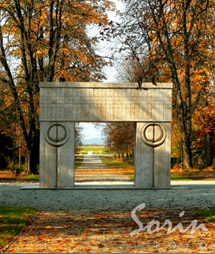
• Romanian personalities in arts and sports: Constantin Brancusi (one of the most acclaimed modern sculptors); Angela Gheorghiu (one of the world's greatest opera soprano); Ilie Nastase (twice ranked as the world's number one men's player in the early 1970s); Nadia Comaneci (Olympic champion, the first gymnast in the world to score a perfect 10); Eugen Ionesco (writer); Gheorghe Zamfir (pan flute virtuoso); George Enescu (world-renowned musician, composer, violonist), Cristian Mungiu (film director, winner of Palme D'Or Cannes 2007, Best Screenplay Cannes 2012), Mircea Cartarescu (writer, poet and journalist, Nobel Prize for Literature nominee in 2012).
Interesting facts:
• The Palace of Parliament in Bucharest is the biggest office building in Europe and second-largest in the world, after the U.S. Pentagon
• Voronet Monastery, located in northeastern Romania, is also known as the 'Sistine Chapel of the East'
• The jet engine used by modern airplanes was invented by the Romanian inventor Henri Coanda
• The Romanian city of Timisoara was the first city in Europe with electric street-lighting
• The Bruckenthal museum in Sibiu opened three years before the Louvre Museum in Paris
• Astra Museum in Sibiu is the second largest outdoor museum in the world, with more than 300 buildings and structures representing village architectural styles from many parts of Romania.
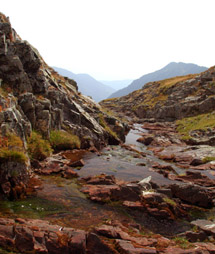
• Prince Charles of Buckingham beloveds and protects Transylvanian castles, which he considers "'the jewel in Romania's crown". He is also a great admirer of Romanian rural scenes that look like pages from Grimms' fairy tales.
• In Romania lies one of the 10 most beautiful natural sights in the world. The Retezat National Park, the land of glacial lakes, was voted by people from all over the world as such, in 2009, during the "Seven Natural Wonders of the World" campaign initiated by the New 7 Wonders Canadian foundation. The Retezat National Park, a place of beautiful wild nature, got more votes than the famous Danube Delta.
You can find more information about Romania at http://www.romaniatourism.com/about-romania.html
History at a crossroads: Bucharest
The city of Bucharest is the capital of Romania and its most important cultural, business and financial center. A young and dynamic city, Bucharest has an eclectic architecture, which provides a view into its history. A mixture of medieval, neoclassical and Art Nouveau buildings, the city center also boasts recently built contemporary structures such as skyscrapers and office buildings. The city's majestic architecture and the sophistication of its elite earned Bucharest the nickname of "Little Paris" at the beginning of the 20th century.
Bucharest is the home of many cultural events and festivals. One of the most important events held in Bucharest is the "George Enescu" International Festival and Competition, run by the Romanian Ministry of Culture. The festival features three weeks of performances by high profile international orchestras and artists, as well as numerous Romanian artists and ensembles. The next "George Enescu" International Festival and Competition edition will take place in September 2013.
You can find more information about The "George Enescu" International Festival at http://www.festivalenescu.ro
Essential information
• Location: Southern Romania
• Size: City of Bucharest - 88 sq.miles (228 sq.km); Bucharest Metropolitan area - 587 sq.m(1,521 sq.km)
• Population: 2.2 milion
Bucharest life during the ESSCIRC/ESSDERC 2013 Conference
The "George Enescu" Festival, http://www.festivalenescu.ro/en/calendar/events, is held in honor of the famous Romanian composer and violinist George Enescu and is organized every two years in Bucharest during September. ESSDERC/ESSCIRC 2013 coincides this year with this Festival, one of the biggest and most reputed classical music festival held in Europe, with participation of famous soloists, conductors and orchestras. On-line ticket reservation is possible, see http://www.festivalenescu.ro/en/tickets
Bucharest's main attractions:
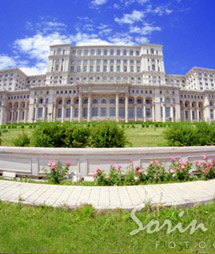
• Palace of the Parliament (Palatul Parlamentului)
The Palace of the Parliament (formerly known as the People's Palace) is the second largest administrative building in the world, after the Pentagon, and the third largest in volume (after Cape Canaveral in the U.S. and the Great Pyramid in Egypt). The building was designed and nearly completed by the communist regime and was intended to be a center of political and administrative power. Today, the Palace houses Romania's Parliament and serves as an international conference center. Built and furnished exclusively with Romanian materials, the building reflects the work of the country's best artisans.
• The Arch of Triumph (Arcul de Triumf)
The Arch of Triumph is one of the most important historic monuments in Bucharest. Initially built of wood in 1922 to commemorate the National Union, the monument was later replaced by a stone version Deva granite in 1936. An interior staircase allows visitors to climb to the top for a panoramic view of the city. The sculptures decorating the structure were created by leading Romanian artists, including Constantin Medrea, Ion Jalea, and Constantin Baraschi. Nowadays, military parades are annually held beneath the arch on 1 December, on Romania's national day.
• The Royal Palace (Palatul Regal)
Buit between 1927 and 1937 in neoclassical style, the palace was home of the King Carol II and to his son, King Mihai I. The Royal Palace is situated in downtown Bucharest, near other historical buildings such as Kretzulescu Church, Romanian Atheneum and the Central Library. Since 1948, The Royal Palace became the headquarter of the National Museum of Art.
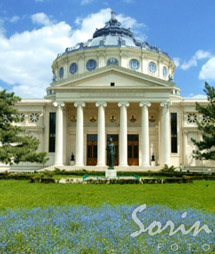
• The Romanian Athenaeum
The Athenaeum is a concert hall in the center of Bucharest and a landmark of the Romanian capital. Opened in 1888, after an intense fundraising campaign, "Give a penny for the Athenaeum", the building was almost entirely financed by Romanian citizens. Renowned worldwide for its outstanding acoustics, the building is the home of the George Enescu Annual International Music Festival. With its high dome and Doric columns, the Athenaeum resembles an ancient temple. And was recognized as a symbol of Romanian culture in 2007 when the building has been inscribed on the list of the Label of European Heritage sites.
• "Casa Doina" (Doina House)
Initially designed for the Paris International Exhibition in 1889, the house is built in a neo-Romanian, Art Nouveau style and displays elements of traditional architecture: porch and covered outdoor scale. Designed by one of the founders of the Romanian architectural styles, Ion Mincu, the building reflects, through its appearance and details, an authentic 19th century mansion. The turret with accolade arches, laid on sculpted wooden columns, is the key-element of the house principal.
• Telephone Palace, a symbol of Bucharest
Telephone Palace (Palatul Telefoanelor) is an Art deco style building. Until 1956, the 52.5 meter building was the tallest building in Bucharest, representing a Romanian version of Manhattan's skyscrapers. Located in the center of Bucharest, on Calea Victoriei, this is a symbol of revolutionary Romanian architecture of the 20th century, but also a reference symbol of "Little Paris". This is the first tall metallic frame building in Romania.
• The National Military Circle
Located in the center of Bucharest, at the intersection of two main communication routes, it is impossible not to notice The National Military Circle Palace, one of the most beautiful buildings in in the city, resembling the Opera Garnier in Paris. The building's architecture is representative for the French neoclassical style. The palace was famous for the glamorous balls held there in the interwar period. The sumptuous interiors hosted over time various proms and reunions and are currently used for cultural events.
• Casa Scanteii – "House of the Spark"
Casa Scanteii, now named Casa Presei Libere (The House of the Free Press) is a symbol of the Stalinist era. The edifice was built in the style of the large-scale Soviet buildings that would represent the superiority of the Communist doctrine, and it was the tallest building in the city between 1957 and 2007. Nowadays, it is the only building in Bucharest still featuring the Communist signs "Sickle and Hammer", carved into medallions on the façade.
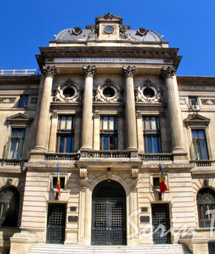
• The National Bank Palace, Bucharest
The National Bank Palace was built by two of the most renowned architects of the time, the French Albert Galleron and the Swiss Cassien Bernard, in the context of the country's national and political revival after the Union in 1859. The building was designed in a Neo-Classical style with an impressive façade. Throughout the historical area of the city, beneath the streets, lay deep cellars, and galleries, reminiscent of the medieval city Bucharest once was.
• Hanul lui Manuc – Manuc's Inn
Manuc's Inn is one of the few remaining vestiges of Bucharest's vanished caravansaries and the last surviving of the tens of inns Bucharest once had. The inn was built in 1808 and was originally owned by the Armenian entrepreneur Emanuel Mârzaian, better known as "Manuc Bey", one of the most influential men in the Balkans in the period. The courtyard is surrounded by impressive open arcades at both floors. The glazed veranda above the entry gate, an architectural element widely spread in the Balkan-Ottoman influence area, is the finest of such original structures in the city.
You can find more information about Bucharest at http://www.romaniatourism.com/bucharest.html.